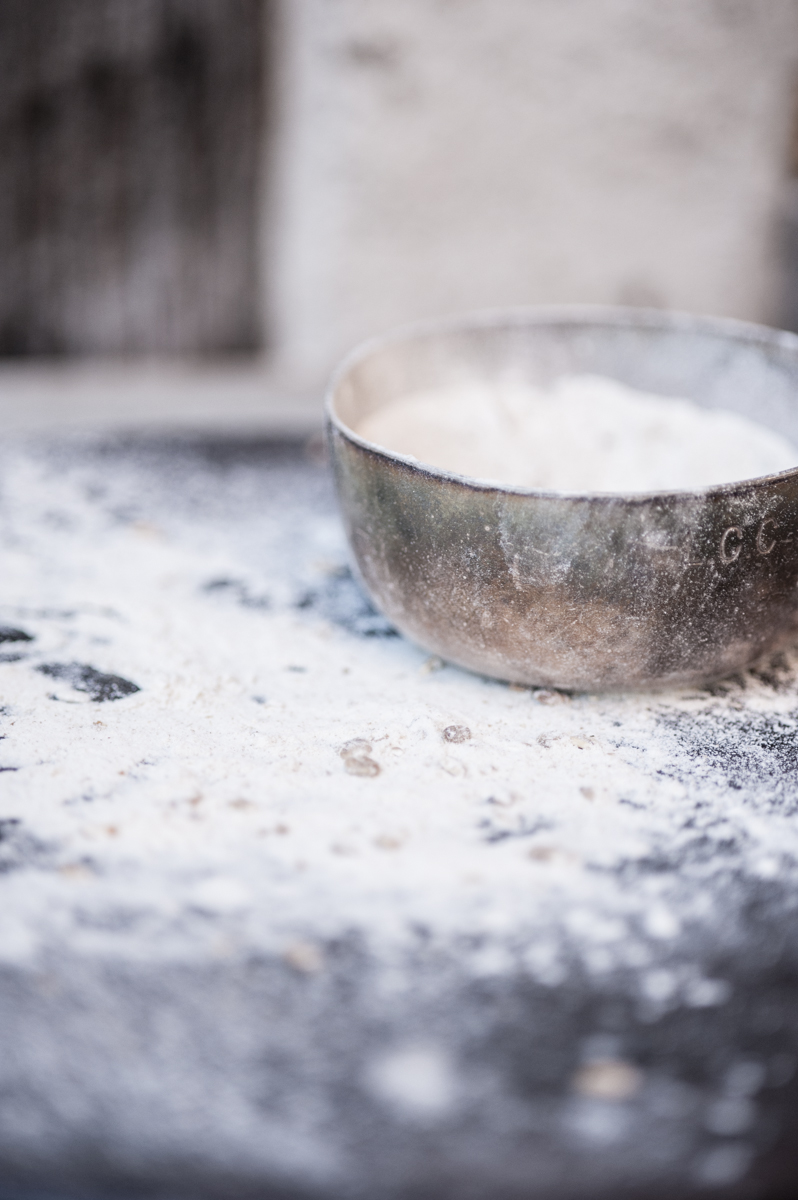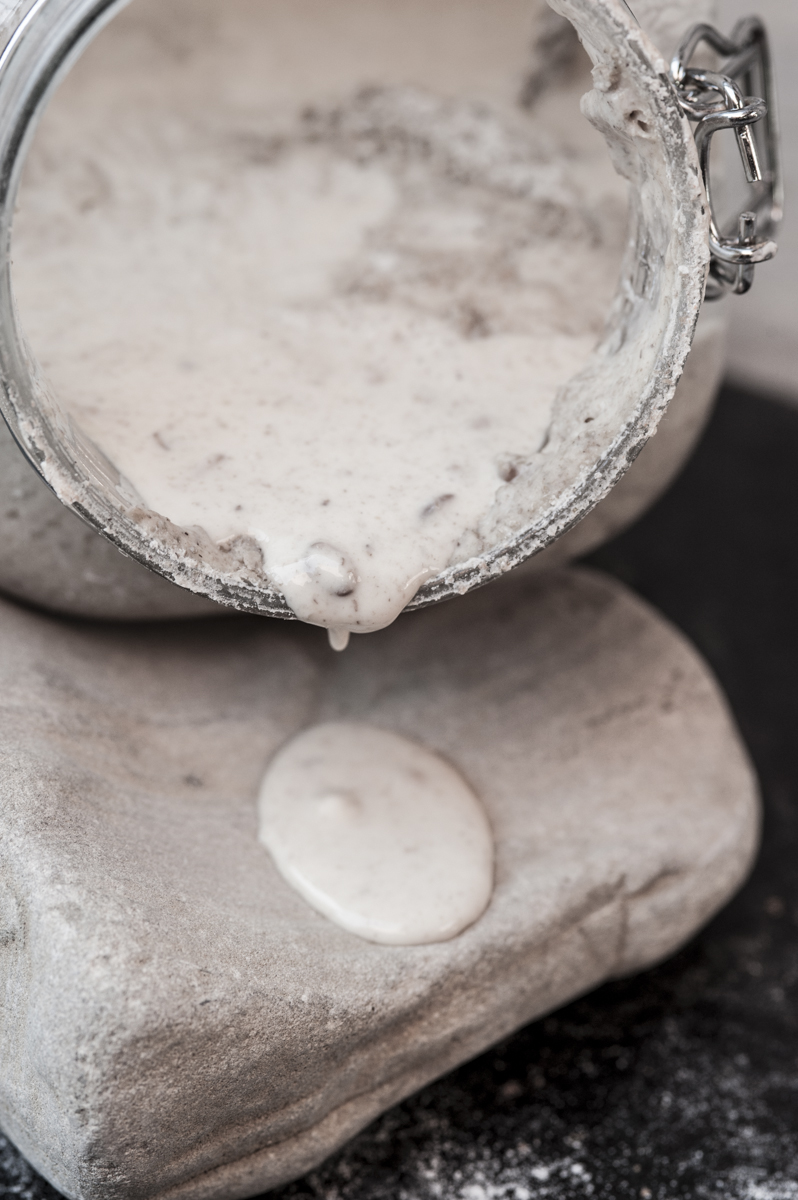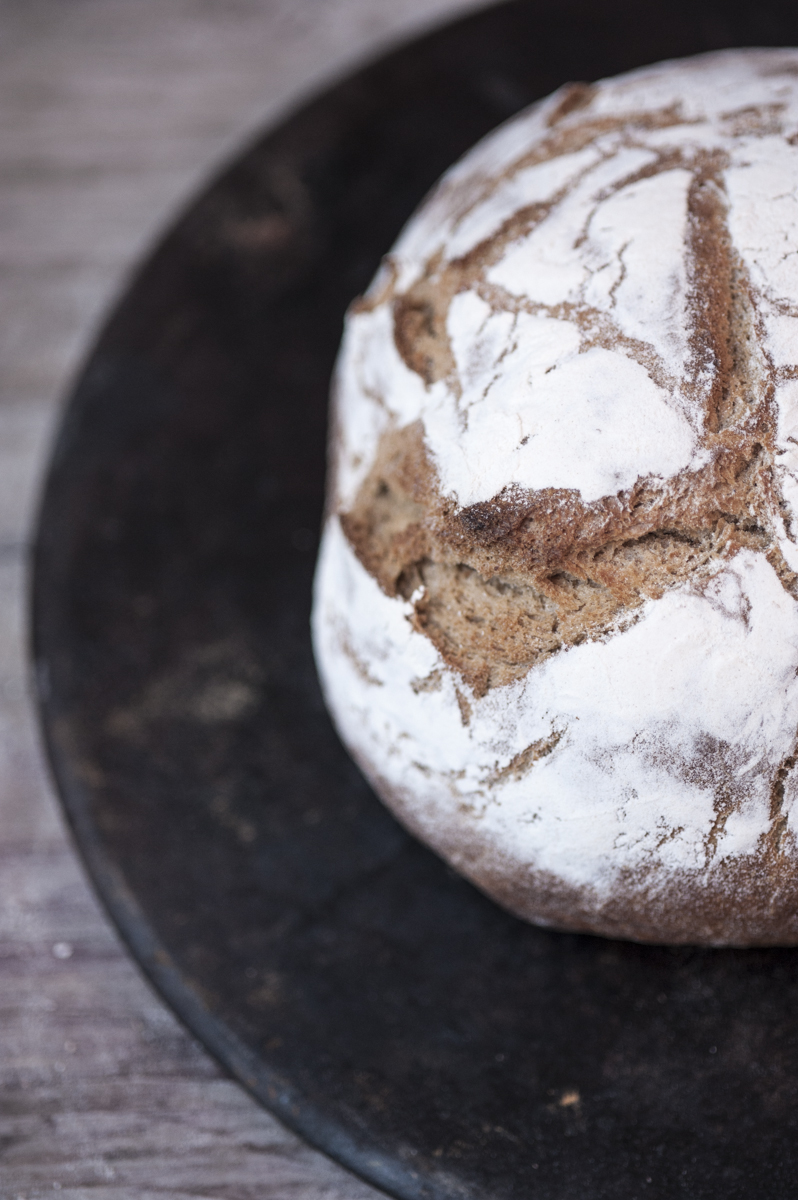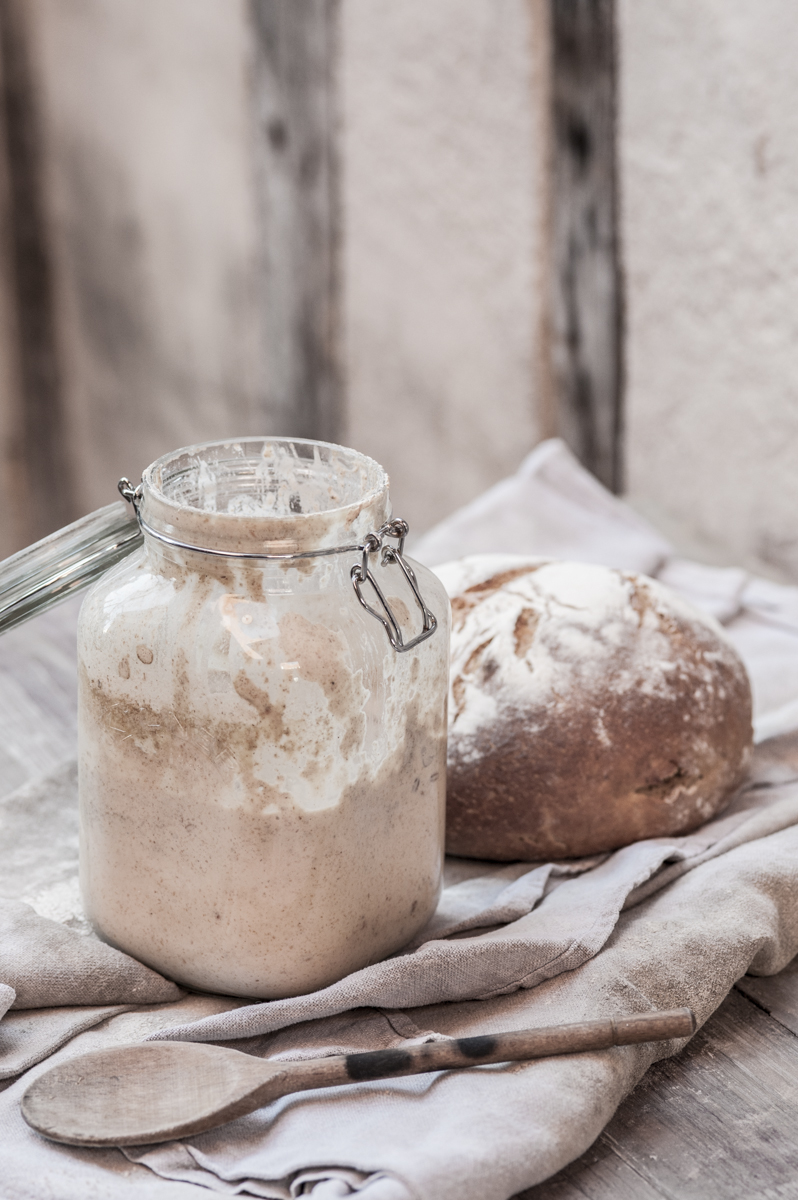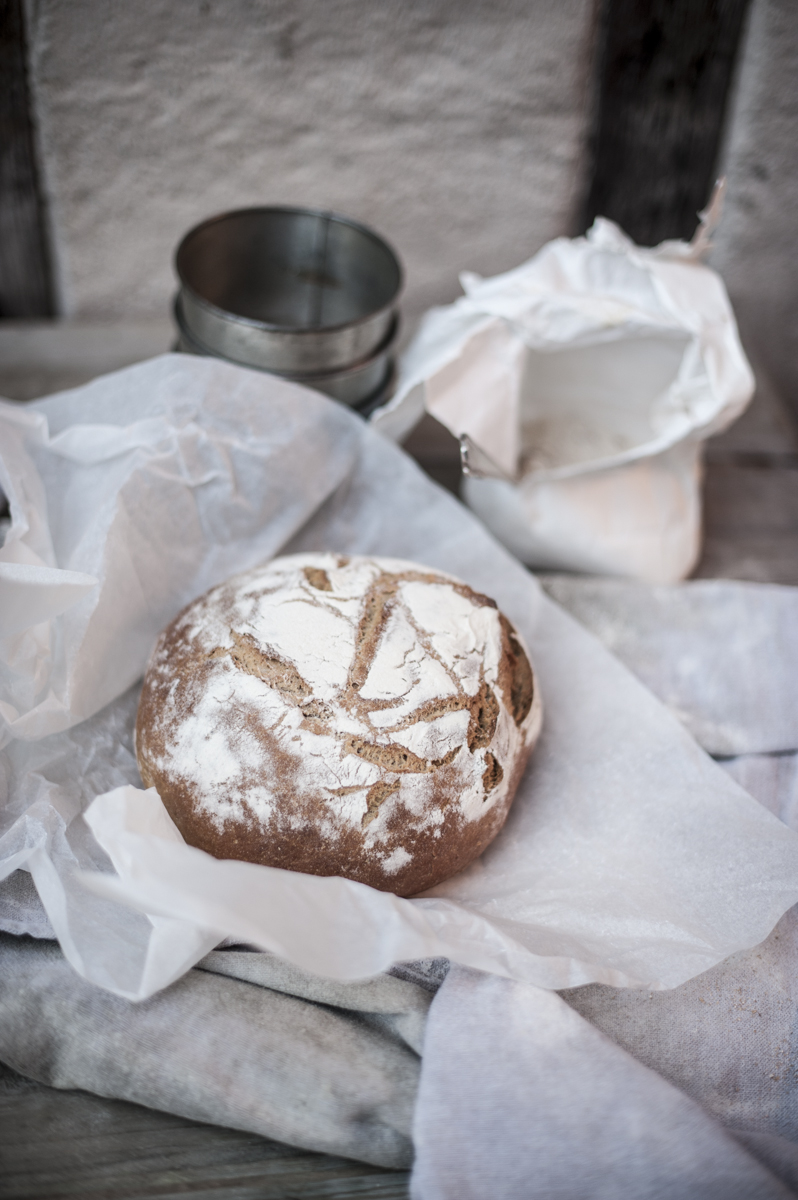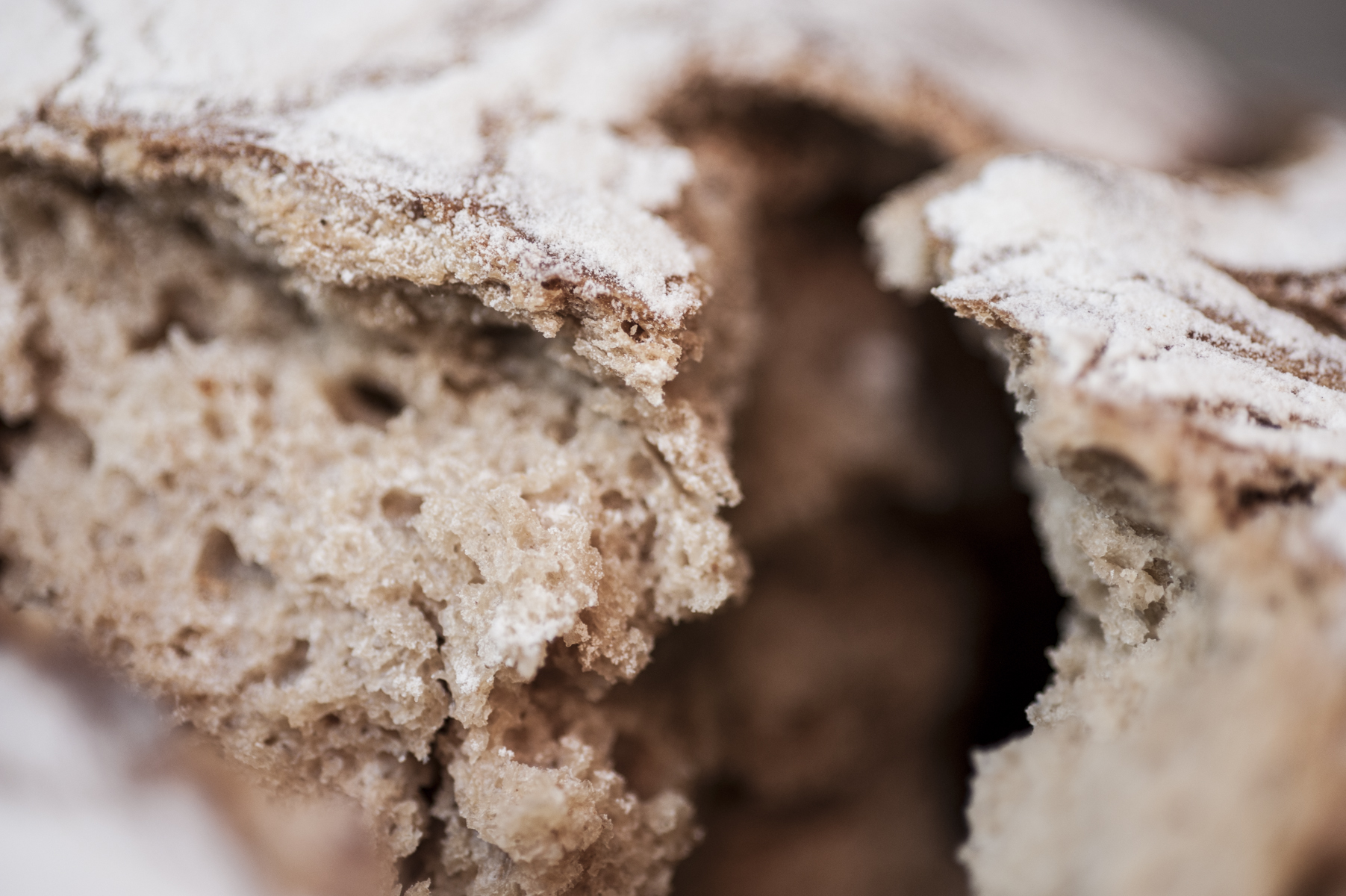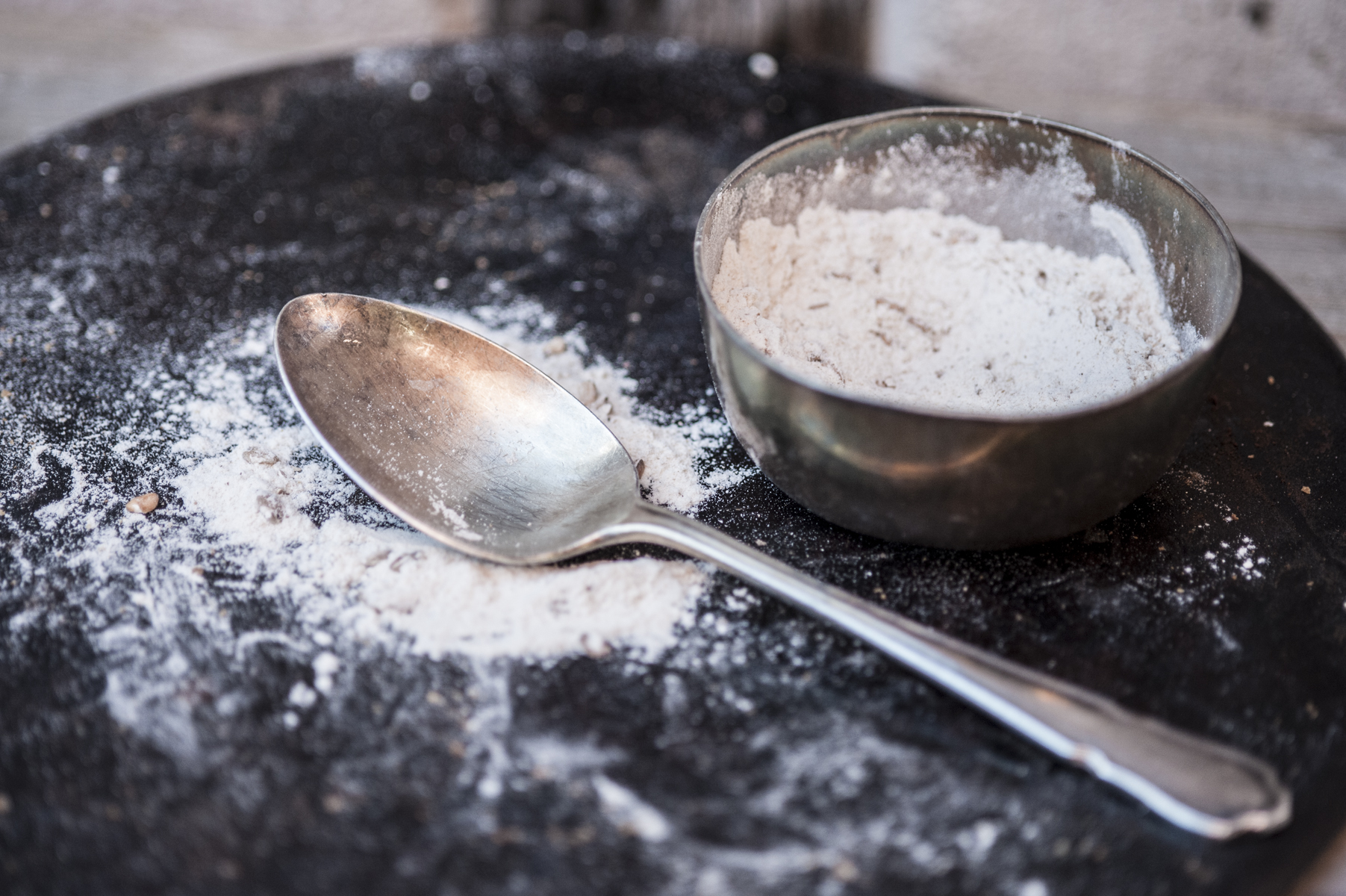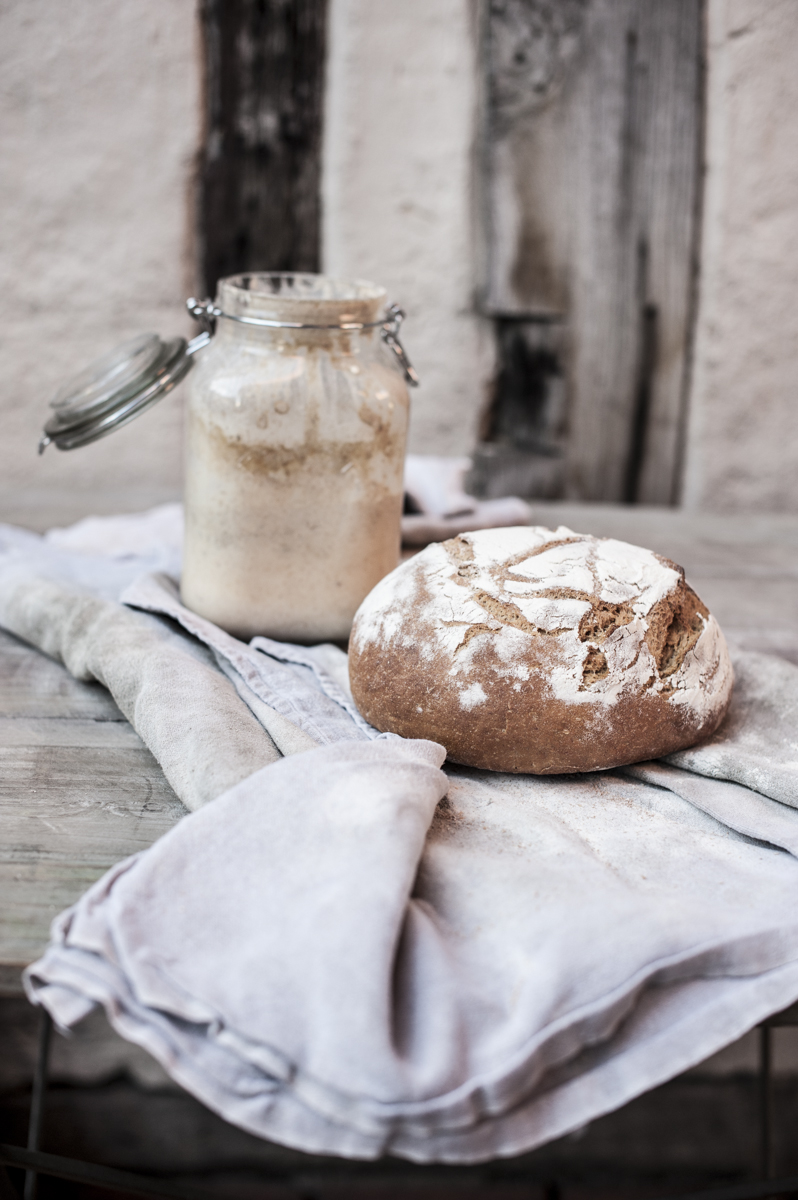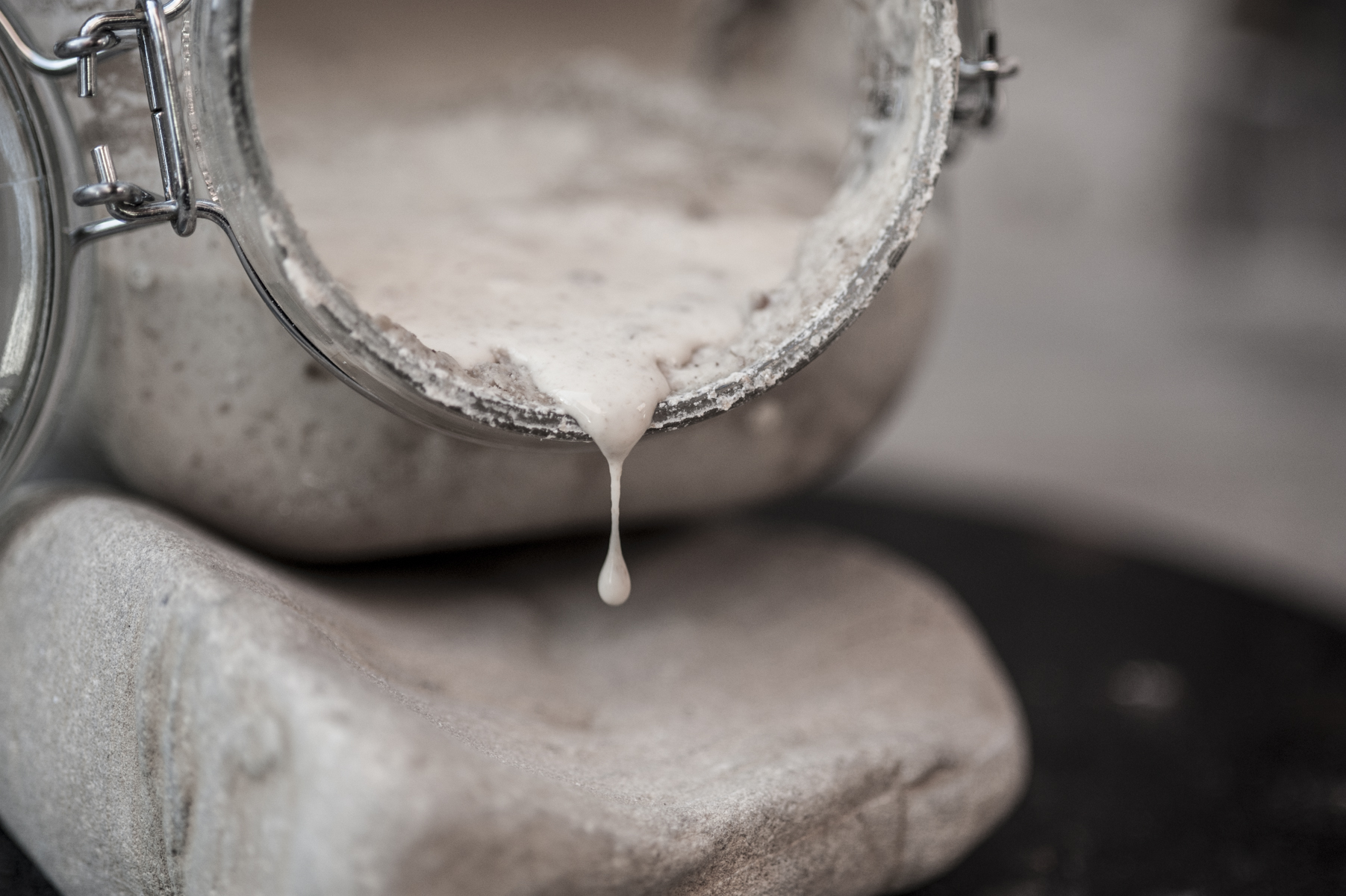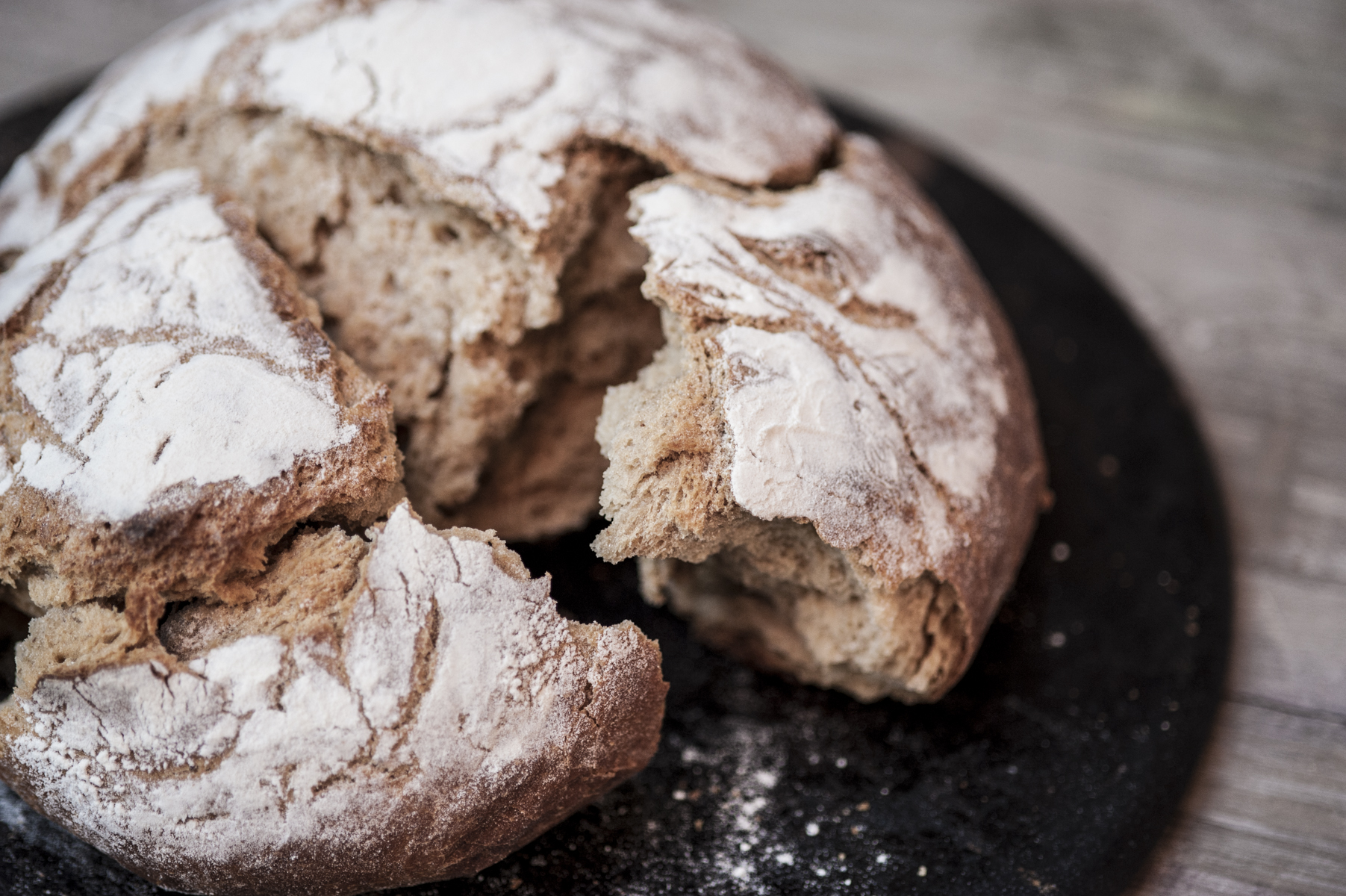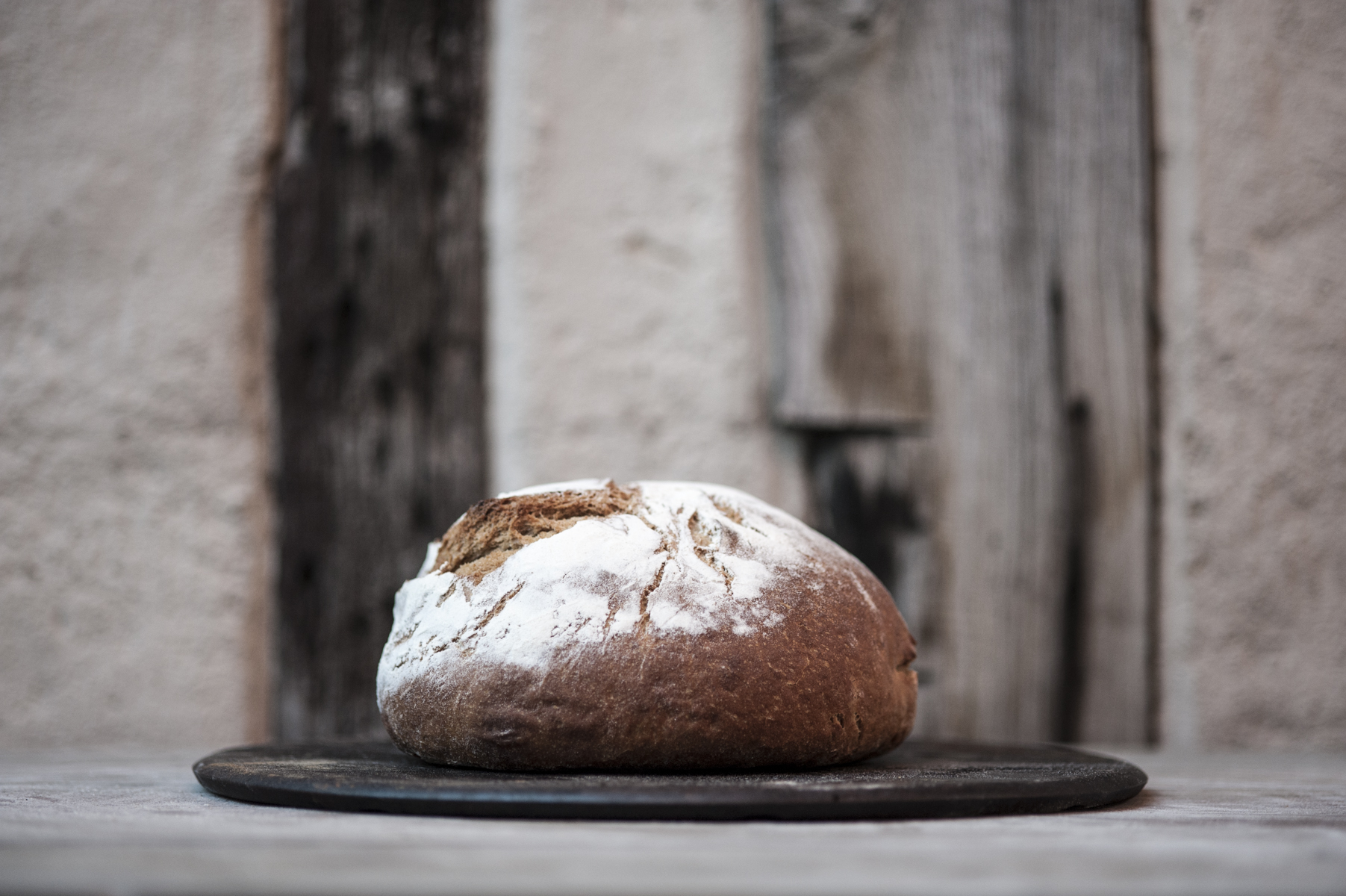Recipe
Sourdough
Words by Miranda GodfreyPhotography & Styling by Daria MarczakStyling by Miranda Godfrey
There is nothing more satisfying than making bread. In our busy lives we need to slow down occasionally, and what better way to do it than to bake.
Sourdough is a type of bread of Ancient Egyptian origin, made by slow fermentation of natural yeasts and lactobacilli. These are anaerobic bacteria, which convert lactose and other sugars into lactic acid, and are also used in the production of yoghurt, cheese, sauerkraut and other fermented products, giving that sour edged flavour.
Enough of the science – how do we do it and why?
There are many different ways of starting the fermentation process to create a ‘starter’, ‘levain’ or ‘Mother’, as it’s sometimes known. My recipe below includes rhubarb, but my Husband uses a little honey. There is no right or wrong method, you just need to know it works! Once you have established your starter, it’s a keeper. You just give it a little love when it needs it.
The type of flour you use is important in the process to assist with the fermentation. Unbleached, organic flour contains more micro organisms than processed flours; wholewheat and seeded flours provide the greatest variety to boost the levain.
My first experience of making a starter was with the infamous Herman the German friendship cake which my Mother gave to me. The idea is that you share a little of a your starter along with a recipe for the cake then you give a little of your starter to your friends and it goes on. Unfortunately, I didn’t look after mine and it died. My mother was not impressed “Ha, a chef who can’t look after a little dough!”
I started my ‘starter’ again, with some of my students from Westminster Kings Way college, where I teach, and made some lovely bread.
I hope you enjoy preparing this as much as making and eating it too.
This starter for sourdough has been inspired by the wonderful Chef Fergus Henderson. I have made a few adjustments to make the end product right for me.
Ingredients
For the starter
1 stick Rhubarb
210ml water
2 tbsp Greek full fat yoghurt
50g rye flour
50g mixed seed flour
100g strong flour
For the sourdough
300g wholemeal flour
200g strong white flour
300g Starter
200ml warm water
50ml cold water (bathe)
10g salt
Method
For the starter
Day 1
Chop the rhubarb and mix with the water and yoghurt.
Add the flour and stir to form a wet lumpy mix.
Dust with flour and leave in a warm place.
Day 2
Stir and dust with flour.
Day 3
Stir – you should see signs of fermentation.
Add 4 tbsp of white flour and 4 tbsp water. Mix well and dust with white flour.
Day 4 & 5
Discard about a third of the mixture and replace with a fresh quantity of all of the ingredients except the rhubarb.
Day 6
Ready to use – it will be bubbly and have a sour smell.
After making the loaf, replenish the starter with half and half flour and water in equal amounts to the amount you used.
After replenishing, leave the starter to ferment another day before use.
Store in fridge or restart by feeding again, discarding a third and feeding it equal parts flour and water. Repeat until fermentation signs begin.
For the Sourdough
Sourdough
This is a long process so do it on a day that you’re not rushing about. It’s better if you start on one day and finish the next. You will be rewarded with a fabulous crusty loaf.
Place flour, starter and warm water in a bowl and mix together until a rough dough forms. Allow to stand for 5 minutes. Add cold water a third at a time. Stretch until smooth. Rest for 10 minutes. Add salt and mix again until smooth. The dough will be quite sticky.
Roll dough into a ball and place into a floured bowl. Refrigerate for 1 hour or overnight.
Gently Shape again and place back into the bowl. Leave in a warm place for 3 hours or until doubled in size.
After it has risen, split into 2 then place on floured tray. It may spread out a little – this is fine. Dust with flour, cover and place on a baking tray until it has again doubled in size (approximately 1-2 hours).
Preheat oven to 230 or the hottest setting and place a bowl of water in the bottom of oven – this will help you get that fantastic crust.
When risen slash the top with a sharp knife. This will stop the bread splitting and give you a unique finish
Place the loaf into the oven to bake for approximately 30 minutes.
Open oven door to let out excess steam, take out the water bowl then close door and bake for a further 10 minutes.
Cool on rack before cutting. As tempting as it is to eat straight from the oven, it will squash too much if you cut it whilst hot.
Enjoy!

